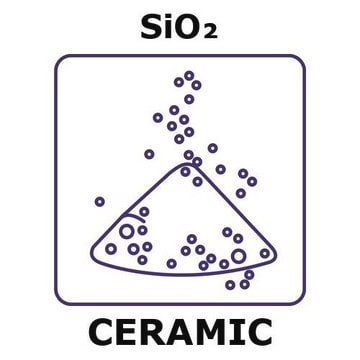すべての画像(2)
About This Item
実験式(ヒル表記法):
W
CAS番号:
分子量:
183.84
MDL番号:
UNSPSCコード:
12141747
PubChem Substance ID:
NACRES:
NA.23
おすすめの製品
アッセイ
≥99.95%
形状
foil
メーカー/製品名
Goodfellow 859-712-68
抵抗性
4.9 μΩ-cm, 20°C
bp
5660 °C (lit.)
mp
3410 °C (lit.)
密度
19.3 g/mL at 25 °C (lit.)
SMILES記法
[W]
InChI
1S/W
InChI Key
WFKWXMTUELFFGS-UHFFFAOYSA-N
関連するカテゴリー
詳細
For updated SDS information please visit www.goodfellow.com.
法的情報
Goodfellow製品
試験成績書(COA)
製品のロット番号・バッチ番号を入力して、試験成績書(COA) を検索できます。ロット番号・バッチ番号は、製品ラベルに「Lot」または「Batch」に続いて記載されています。
J R Marbach et al.
Physics in medicine and biology, 26(3), 435-443 (1981-05-01)
Curves relating beam energy, scattering foil thickness, central-axis depth-dose, and beam flatness have been generated using data taken on a Siemens 200A betatron. The curve set allows a single combination of tungsten foil thickness and electron beam energy to be
Congshang Wan et al.
Ultramicroscopy, 119, 106-110 (2011-11-15)
Thermionic electron emission from 200 to 500 nm thick coatings of scandium oxide on tungsten foil have been examined in thermionic emission microscopy, spectroscopic photoelectron microcopy, synchrotron radiation and ultraviolet photoelectron spectroscopy (UPS). A clear dependence of the scandium oxide-W
Mehran Ahmadlou et al.
Nature communications, 6, 6773-6773 (2015-04-04)
The superior colliculus is a layered structure important for body- and gaze-orienting responses. Its superficial layer is, next to the lateral geniculate nucleus, the second major target of retinal ganglion axons and is retinotopically organized. Here we show that in
Mark L Witten et al.
Chemico-biological interactions, 196(3), 87-88 (2011-12-21)
There is emerging evidence that tungsten has toxic health effects. We summarize the recent tungsten toxicity research in this short review. Tungsten is widely used in many commercial and military applications because it has the second highest melting temperature of
P Thongkumkoon et al.
Toxicology letters, 226(1), 90-97 (2014-02-08)
The toxicity of nanomaterials has been well known, but mechanisms involved have been little known. This study was aimed at looking at direct interaction between nanomaterials and naked DNA for some fundamental understanding. Two different types of nanomaterials, carbon nanotubes
ライフサイエンス、有機合成、材料科学、クロマトグラフィー、分析など、あらゆる分野の研究に経験のあるメンバーがおります。.
製品に関するお問い合わせはこちら(テクニカルサービス)




